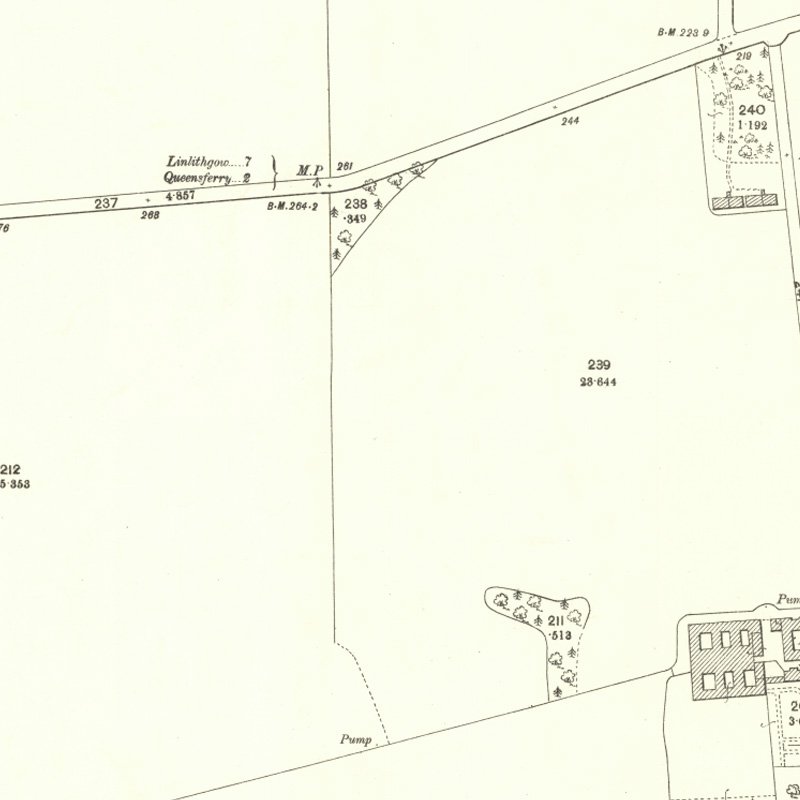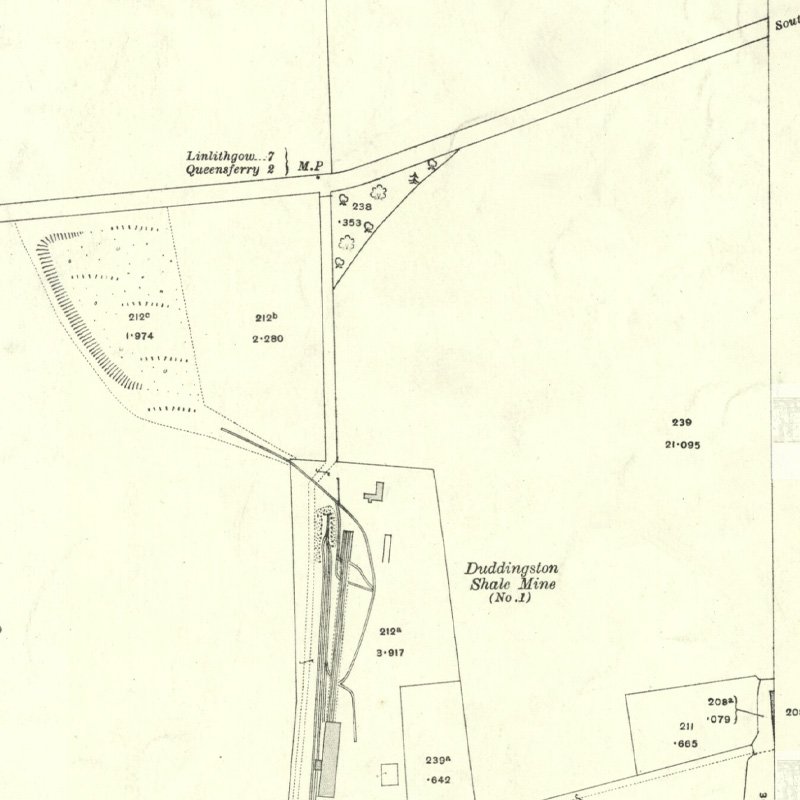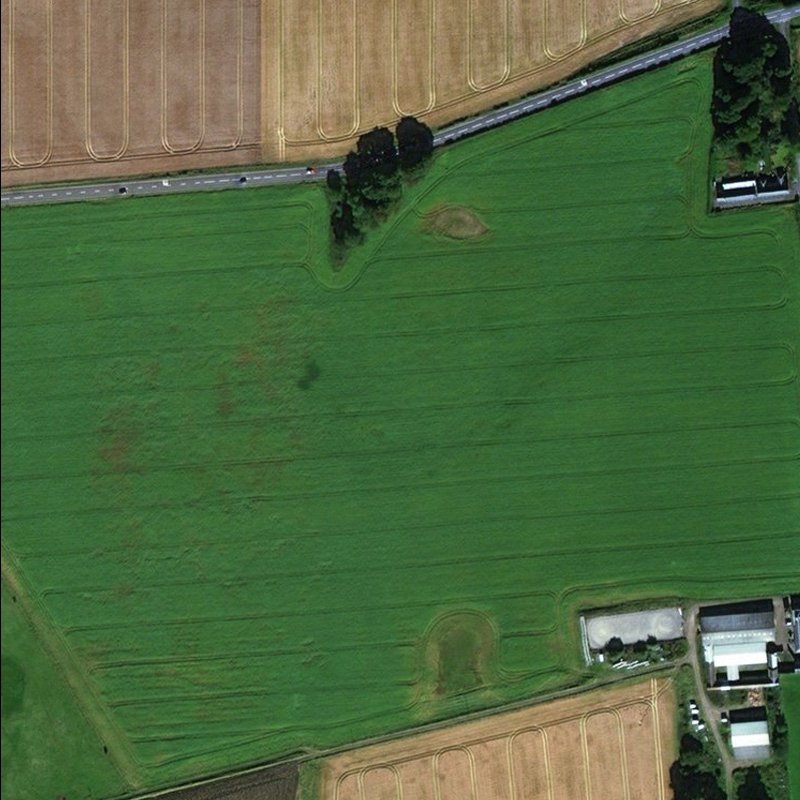- Addiewell No.1 pit
- Addiewell No.1 mine
- Addiewell No.2 pit
- Addiewell No.2 mine
- Addiewell No.3 pit
- Addiewell No.3 mine
- Addiewell No.4 pit
- Addiewell No.5 pit
- Addiewell No.6 pit
- Addiewell No.18 mine
- Albyn mine
- Alderstone No.43 mine
- Baads No.9 pit
- Baads No.15 pit
- Baads No.17 mine
- Baads No.22 pit
- Baads No.23 pit
- Baads No.42 mine
- Boghall No.1 pit
- Boghall No.2 coal pit
- Boghall No.3 pit
- Boghall No.4 pit
- Boghall "Raeburn" mine
- Breichdykes pits
- Breich No. 1 & 2 pits
- Burngrange No. 1 & 2 pits
- Burngrange No. 39 mine
- Burntisland No.1 mine
- Burntisland No.2 mine
- Burntisland No.3 mine
- Burntisland No.4 mine
- Carledubs mine
- Champfleurie mine
- Cobbinshaw No.1 & 2 mines
- Cobbinshaw No.5 mine
- Cobbinshaw South No. 1 pit
- Cobbinshaw South No.28 mine
- Cobbinshaw South No.3 mine
- Cobbinshaw (West Calder Oil) pit
- Cousland No.1 mine
- Cousland No.2 mine
- Crossgreen No.1, 2, & 3 mines
- Cuthill No.24 coal mine
- Dalmeny No.1 pit
- Dalmeny No.2 pit
- Dalmeny No.3 pit
- Dalmeny Railway No.1 & 2 mines
- Deans (Caputhall) mine
- Deans No.1 mine
- Deans No.2 mine
- Deans No.3 mine
- Deans No.3 mine & quarry (W.L.O.C.)
- Deans No.4 mine
- Deans No.4 pit
- Deans No.5 mine
- Deans No.6 mine
- Deans No.7 mine
- Drumcrosshall No1. & No.2 mines
- Drumshoreland Muir pit
- Duddingston No. 1 & 2 mines
- Duddingston No.3 mine & quarry
- Dunnet or Sandholes mine
- Dunnet's mine, East Hermand
- Easter Breich coal mine
- Easter Breich No.1 & 2 pits
- Fivestanks mine
- Fivestanks; unidentified mine
- Forkneuk No.1 & 2 pits
- Forkneuk No.38 mine
- Forkneuk No.9 & 10 pits
- Fraser pit
- Gavieside No.1 pit
- Gavieside No.2 pit
- Gavieside No.3 pit
- Gavieside No.40 mine
- Grange No.1 & 2 pits
- Grange No.3 pit
- Greendykes North mine
- Greendykes South mine
- Greenfield No.1 pit
- Greenfield No.3 mine
- Hartwood mine & coal pit
- Hayscraigs mines and quarries
- Hermand mine
- Hermand (Murray's pool) mine
- Hermand No.5 pit
- Hermand No.6 mine
- Hillend coal pit
- Holmes mine
- Hopetoun No.35 pit
- Hopetoun No.4 mine
- Hopetoun No.1 pit
- Hopetoun No.2 pit
- Hopetoun No.3 mine
- Hopetoun No.41 (Fawnspark) mine
- Hopetoun No.44 mine
- Hopetoun No.5 pit
- Hopetoun No.6 (Glendevon) mines
- Hut mines and quarry
- Ingliston No.33 pit
- Ingliston No.36 & 37 pits
- Lawhead No.1 mine
- Limefield No.32 mine
- Livingston quarries
- Mid Breich No.2 mine
- Mid Breich No.3 pit
- Mid Breich No.4 pit
- Mortonhall No.10 mine
- Mortonhall No.9 mine
- Muirhall No.16 coal mine
- Muirhall No.19 coal pit
- Newbigging No.1 & 2 mines
- Newfarm No.3 & 4 mines
- Newliston No.29 mine
- North Cobbinshaw mine
- Oakbank: Calder wood mine
- Oakbank No.1 & 2 pits
- Ochiltree Colliery - north
- Ochiltree Colliery - south
- Ochiltree No.2 mine
- Ochiltree No.3 mine
- Ochiltree No.5 mine
- Ochiltree No.6 mine
- Pentland No.1 & 2 mines
- Philpstoun No. 1 mine
- Philpstoun No. 1 (Whitequarries) mine
- Philpstoun No. 2 mine
- Philpstoun No. 3 mine
- Philpstoun No. 4 (grey) mine & quarry
- Philpstoun No. 4 mine
- Philpstoun No. 5 mine
- Philpstoun No. 6 (Whitequarries) mine
- Philpstoun No.7 mine
- Polbeth No. 8 pit
- Polbeth No.10 pit
- Polbeth No. 11 pit
- Polbeth No. 20 mine
- Polbeth No. 21 mine
- Polbeth No. 26 mine
- Polbeth No. 27 mine
- Polbeth No. 31 mine
- Polbeth No. 7 & 7½ pits
- Pumpherston No.1 mine
- Pumpherston No.2 mine
- Pumpherston No.3 mine
- Pumpherston No.4 mine
- Pumpherston No.5 mine
- Pumpherston No.6 mine
- Pyothall No.5 pit
- Redhouse No.1 coal mine
- Roman Camp (Cawburn) mine
- Roman Camp No.1 mine
- Roman Camp No.3 mine
- Roman Camp No.4 pit
- Roman Camp No.5 mine
- Roman Camp No.6 mine
- Roman Camp No.7 mine
- Roman Camp (north) No.2 mine
- Roman Camp (south) No.2 mine
- Rosshill No.1 & 2 mines
- Seafield coal mine
- Seafield No.1 mine
- Seafield No.3 mine
- Stankards No.1 pit
- Stankards No.45 mine
- Stewartfield No.1 mine
- Stewartfield No.1 pit
- Stewartfield No.2 mine
- Stewartfield No.2 pit
- Stewartfield No.3 pit
- Stewartfield No.4 pit
- Straiton No.1 & 2 mines
- Straiton No.3 pit & No.3 mine
- Straiton No.4 mine
- Straiton No.8 mine
- Strathbrock collieries
- Tarbrax No.1 pit
- Tarbrax No.2 pit
- Tottleywells No.1 mine
- Viewfield coal pit
- Viewfield No. 4 & 5 pits
- Westwood No.12 pit
- Westwood No.1 & 2 pits
- Westwood No.13 pit
- Westwood No.30 pit
- Woolfords colliery
Duddingston No. 1 & 2 mines
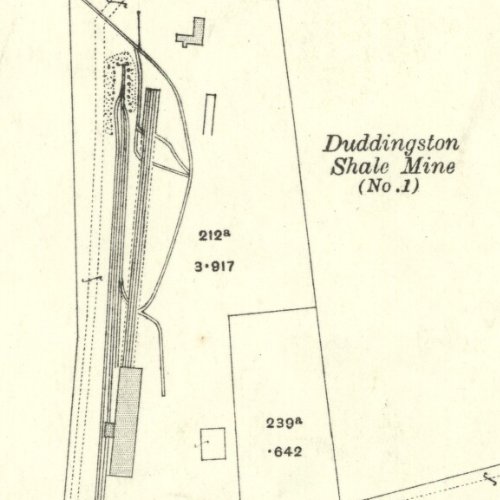
Inclined adit
Serving Niddry Castle Crude Oil Works
Mines driven to exploit the Camps and Dunnet Shales beneath the Hopetoun Estate, linked to Niddry Castle Crude Oil Works by electric tramway. Duddingston was the first completely electrified mine in the Scottish shale oil industry.
Shale-field: Duddingston shale-field.
Mapped by the Ordnance Survey of c.1917, showing Duddingston No. 1 in production.
Drawings

From "Sections of Shale Seams", a notebook by Robert Crichton. BP Archive 183734
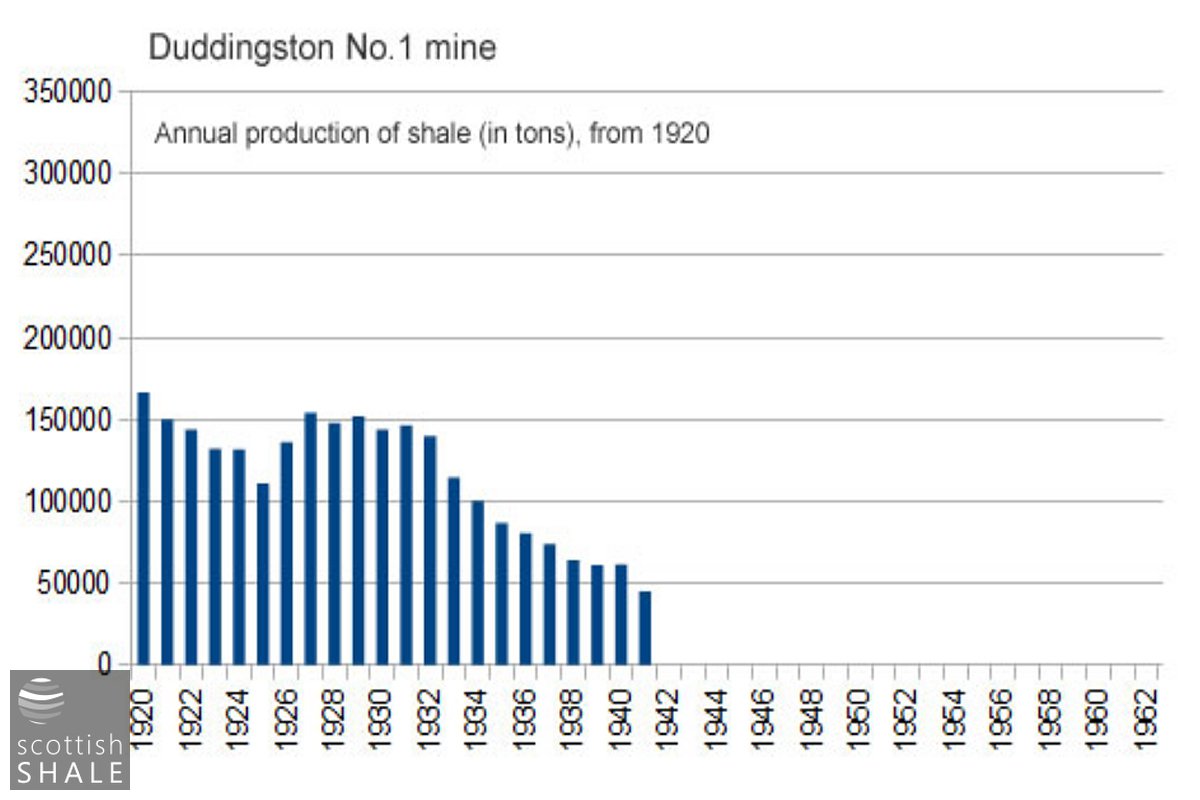
Production statistics from 1920.
Recent images

Field adjacent to mine site, showing signs of subsidence. Looking south. December 2012.

View towards site of mine (centre left) with the snowy Pentland hills in the distance. Looking south. December 2012.
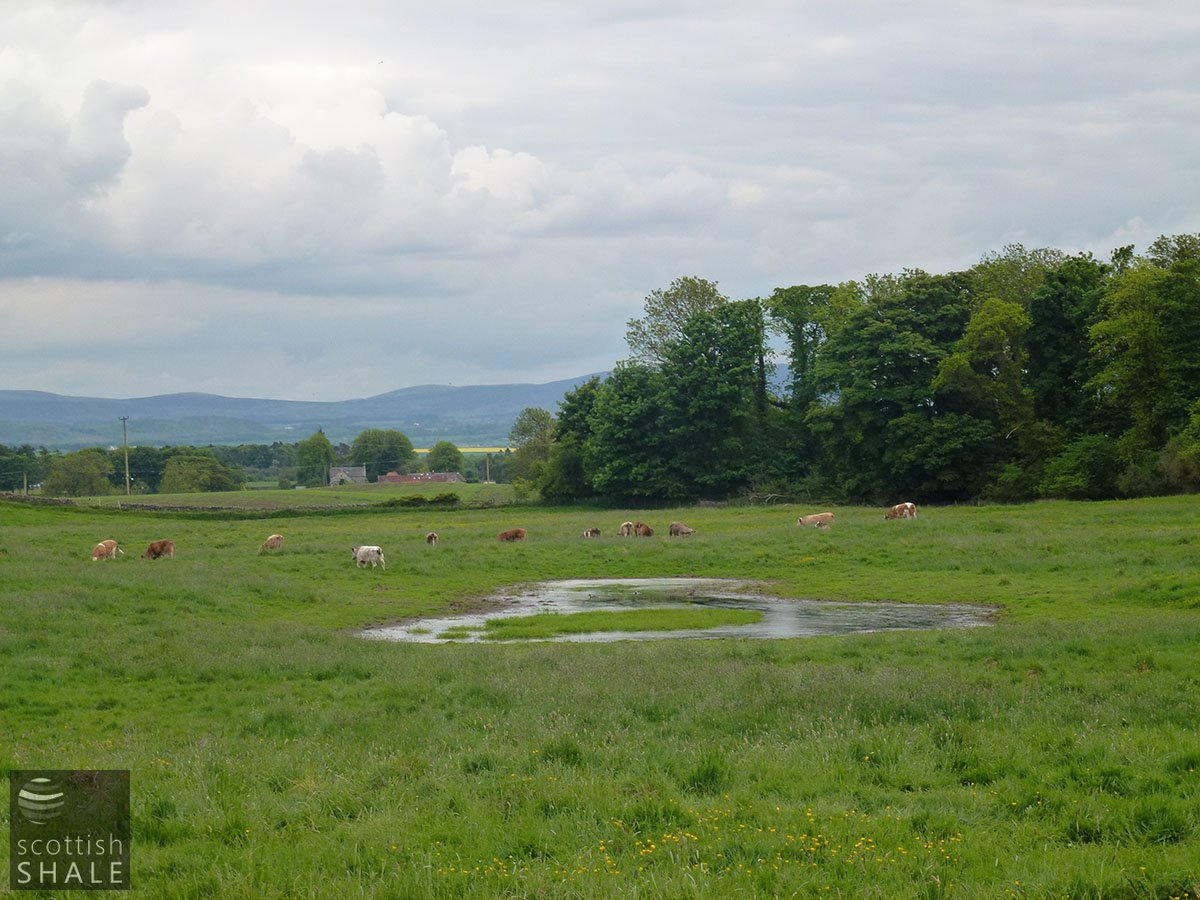
View south. December 2012.
There were, he said, two mines; No.1 was the haulage road, and No.2 the travelling road. These two roads were connected by cross-cuts. There was a double set of rails on the haulage road, and it was worked on the endless tow-rope system. The hutches were fastened to the tow-rope by means of a chain 12 ft. long.....The system was one of the most modern. The travelling road was 10ft wide by 6ft high, and the haulage road about 12ft wide by 7ft high.
Enquiry into the deaths of George Stirret and Harry Feeney, quoted in Linlithgowshire Gazette, 5th August 1912
.......
The Barracks seam has been reached in the section of No.1 mine where it had been cut off by a fault, and a test has given yields of 20.5 gallons of crude oil and 40.5 lbs of Sulphate, the oil yield being better than usual for this seam. (March 1924).
From Scottish Oils Ltd, Managing Director's Monthly Report to the Board. (BP Archive No. 215662)
.......
SHALE WORKING IN WEST LOTHIAN.
The Oakbank Oil Company, who some time ago obtained a lease of the shale on that part of the Hopetoun estate between the village of Winchburgh and the Firth of Forth, have sunk two pits near the village of Duddingston. The shale covers a large area, and the seam is a thick and rich one. The company are at present erecting a block of houses in tlie neighbourhood of the mines to accommodate a number of their workmen engaged there, and are also making preparations for the erection of crude oil and sulphate of ammonia works near the ruin of Niddry Castle. The works and the mines, which will be two miles apart, are to be connected with a railway. Sixty houses have also been erected in the village of Winchburgh, and the School Board are contemplating an extension of the Winchburgh Public School to give accommodation to tho additional children that will require to be provided for.
Edinburgh Evening News, 21st April 1902
Coal Authority Mine Abandonment Catalogue No. 13131, showing workings in the Barracks and Dunnet Shales from Duddingston No. 1 and No. 2, abandoned in 1941.
- Oral history transcript: Mr William Gibb
- Oral history transcript: Mr James Hanlon & Mr Irvine Hanlon
- Oral history transcript: Anonymous, Mr & Mrs W
- Oral history transcript: Mr John McRiner
- Oral history transcript: Mr James Paterson
- LVSAV1984.022 - Plan - mine abandonment plan Duddingston No.1, 1942 - Underground mine abandonment plan, Barracks shale seam, Duddingston No 1 Mine, 1942
- LVSAV1984.024 - Plan - Duddingston No 1 and No 2 mines, 1932 - Underground mine plan, Dunnet seam workings, Duddingston No 1 and Duddingston No 2 mines


